Blocking an outward opening door is a great way to ensure security and keep unwanted intruders out. It’s also a great way to reduce the risk of accidental injury caused by someone inadvertently pushing open the door to enter or leave home or business. Outward-opening doors are often used in public areas where people can easily access them; blocking them can help protect both the people inside and those outside.
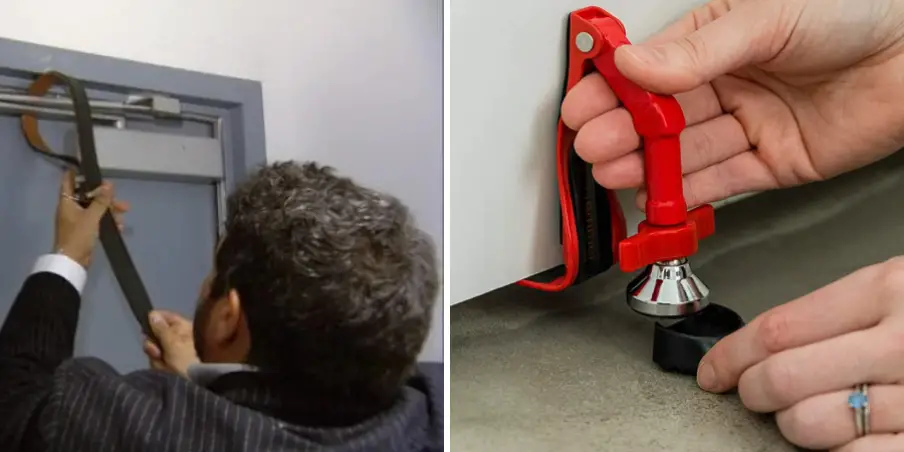
One of the main advantages of blocking an outward opening door is that it provides an extra layer of security in areas that are prone to crime or vandalism. Blocking an outward opening door helps prevent unwanted intruders from entering and protects the items inside from being stolen or damaged.
Using a lockable device such as a deadbolt can also provide additional protection against forced entry. In this blog post, You will learn how to block an outward opening door in detail.
Step-by-step Instructions for How to Block an Outward Opening Door
Step 1: Inspect Your Outward Opening Door
For an outward opening door, check the frame and hinges to ensure that it is level and securely fastened. If there are gaps between the door and frame, use a screwdriver or other tool to tighten them.
Step 2: Choose How You Want To Block It
There are several options for blocking an outward-opening door. These include wedging a piece of wood between the door and frame, placing an adjustable metal bracket near the bottom of the door, or using a portable security bar. If you choose to use an adjustable metal bracket or a portable security bar to block your outward-opening door, you must purchase the necessary hardware.
Step 3: Install The Bracket Or Bar
If you choose to install a bracket or bar, follow the instructions provided by the manufacturer for installation. Make sure that it is secure and level before proceeding to the next step. If you choose to wedge a piece of wood between the door and frame, place it in such a way that it can’t be easily moved.
Step 4: Secure The Door Properly
After you have wedged the door securely, firmly close and lock it to ensure that nobody can enter or leave without your permission; after you have secured the door, test its security by trying to open it from the outside. If successful, go back and re-secure it until you are confident that no one else can get in or out without your permission.
Step 5: Check The Lock And Hinges Regularly
It is important to regularly check the lock and hinges of your outward-opening door to make sure that it is still secure. If you choose to use a wedge to block an outward-opening door, remember to remove it when you’re ready to open the door again.
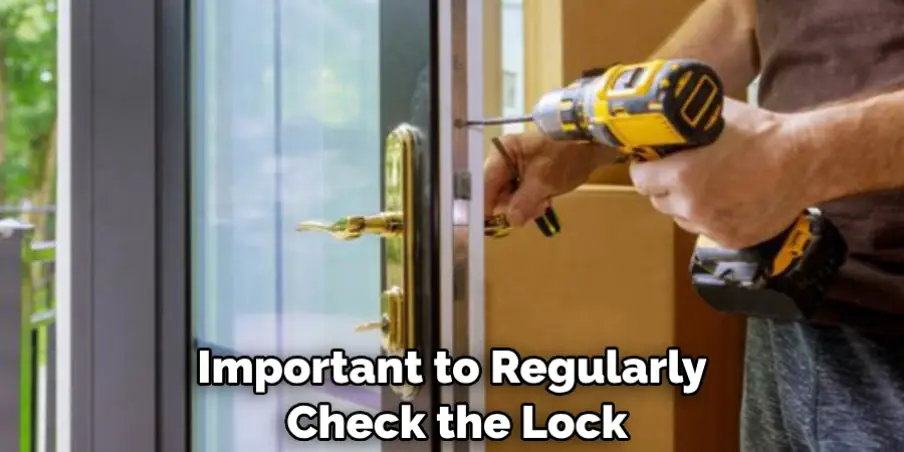
Step 6: Remove The Bracket Or Bar When Necessary
If you choose to use a bracket or bar for blocking an outward-opening door, remember to remove them when you’re ready to open the door again. Following these steps will help ensure that your outward-opening door is always properly and securely blocked.
Tips for How to Block an Outward Opening Door
- Take a moment to check that you are dealing with an outward-opening door, not one opening inwards. This could be especially important if you’re trying to keep someone from entering your home or office.
- Select an item appropriate for blocking the door, such as a rolled-up rug, a chair or other piece of furniture, a stack of heavy books, or a large piece of artwork.
- Place the block securely in front of the door so that the door cannot open even with force applied to it. Be sure to place it low enough that there is no way for anyone to get around it or over it.
- With one hand, firmly grip the doorknob or handle of the door so that it won’t turn and open when pressure is applied from the other side.
- Make sure that the door is securely locked before you let go of the handle. You can create extra security by placing an additional block behind or beside the door while you hold onto the doorknob.
- Be sure to remove any other objects that might be used by someone on the other side of the door to try and turn or move the door handle, such as a coat hanger, a stick, or another tool.
- Once everything is secure, test the door by pushing and pulling on it to make sure that it won’t open. Adjust your blocks as necessary to ensure safety if you feel any movement when testing the door.
Following these simple steps can help you block an outward opening door and create a secure environment for yourself and others.
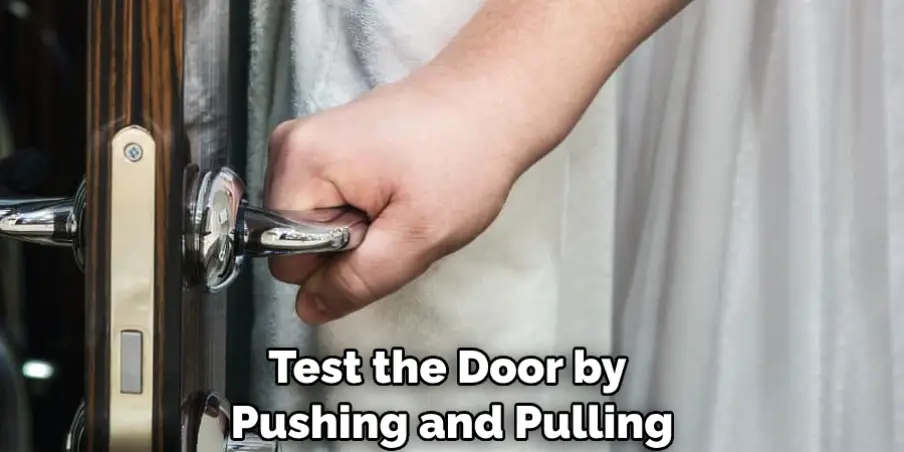
What Are the Risks Associated With Blocking an Outward Opening Door?
There are several risks to be aware of when blocking an outward opening door. First and foremost, if the door is blocked too securely or if it is blocked in a way that fails to allow for a quick escape, it can become a safety hazard.
Additionally, blocking an outward opening door can create an obstruction, leading to other dangers such as falls, trips, and slips. Finally, if the door is blocked with the wrong materials, it may not be able to withstand a fire or other emergency situation. Therefore, it is important to take all of these risks into consideration when blocking an outward opening door.
The best way to block an outward opening door safely and effectively is by using a doorstop. Doorstops are specifically designed to securely block outward opening doors without creating an obstruction and can provide additional safety in a fire or other emergency.
Additionally, doorstops can be easily moved if the need arises for a quick escape from the room. To ensure maximum safety when blocking an outward opening door, it is important to use a doorstop that is specifically designed for the type of door in question.
How Should You Secure the Blocking Material to Prevent It From Slipping or Coming Loose?
When blocking an outward opening door, securing the material used for blocking is important to prevent it from slipping or coming loose. The best way to do this is by using a combination of nails, screws, and hinges. Nails can be driven through the material and into the edges of the door frame or jamb to hold it in place.
Screws can also be inserted into the material and into the frame or jamb to provide extra strength. Hinges can also hold the blocking material in place and help ensure it remains secure when closed. Additionally, if the door is made of metal or wood, adhesive strips or weather-stripping can help secure the block.
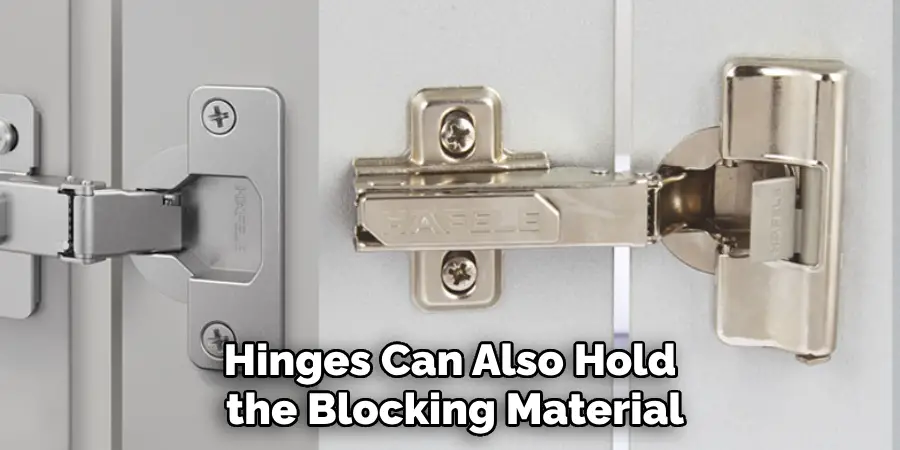
Once all the screws, nails, or hinges are in place, it is important to check that they are tight and secure before closing the door. This will ensure that the blocking material does not become loose or shift when the door is opened or closed.
In some cases, you may also consider adding additional security features, such as locks or deadbolts, to ensure the door remains secure.
Additionally, it is important to remember that blocking an outward opening door does not automatically make it safe; always use caution and take other preventive measures when dealing with a potentially dangerous situation.
How Often Should You Check the Door for Any Signs of Tampering or Attempted Forced Entry?
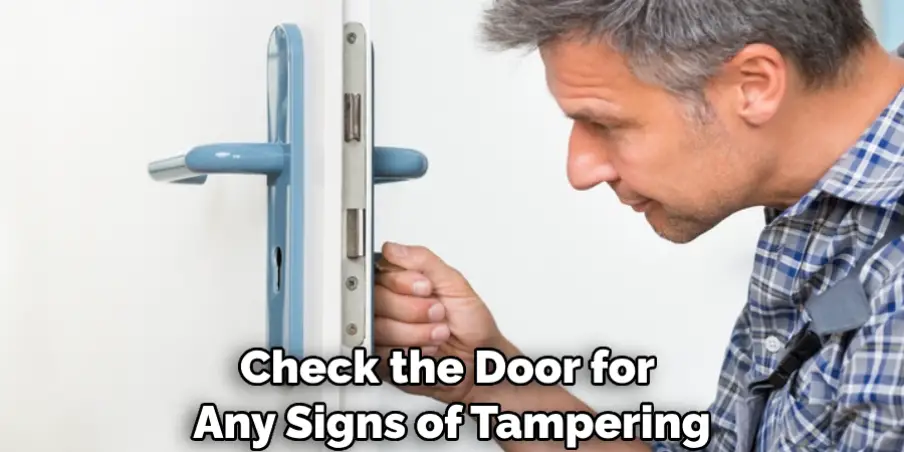
It is important to check the door for any signs of tampering or attempted forced entry on a regular basis. Depending on the environment and level of security needed, this should be done at least once a month.
If possible, it is best practice to have someone regularly inspect the hardware and frame of the outward open door to make sure that there are no signs of tampering. It is also important to check the door and its frame for any signs of damage or wear, which could make it easier for someone to gain access without permission.
If there is evidence that the door has been tampered with or forced open, contact a professional locksmith immediately in order to assess the situation and take appropriate action to secure the property. If necessary, you may need to replace or upgrade locks and other hardware in order to ensure that the outward opening door is properly secured and all entry points are protected from unauthorized access.
Are There Any Special Considerations for Blocking a Door in an Emergency Situation?
Yes, there are special considerations for blocking a door in an emergency situation. First and foremost, you want to ensure that your method of blocking the door will keep it securely shut and prevent anyone from entering or leaving the building. You also need to be aware of any fire regulations in your area to ensure your method meets any safety requirements.
If you use a physical object, such as a chair or piece of furniture, to block the door, ensure it is secure and won’t be easily moved or opened. You also want to be sure that no one will trip over it when passing through the area.
Additionally, if you are blocking an outward-opening door, use two or more objects to ensure it is secured. If you are using an electronic device to block a door, ensure that it will work in the event of a power outage and that it has been tested and approved by the relevant fire safety organization in your area.
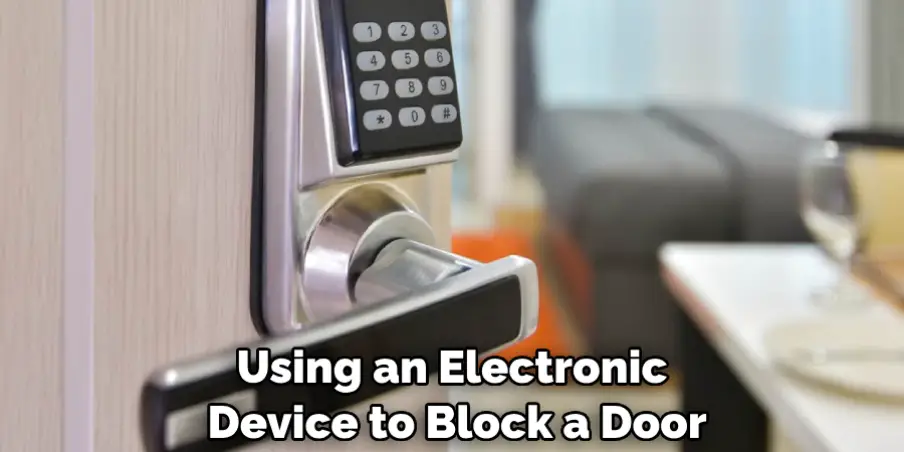
Conclusion
In conclusion, it is important to know to block an outward opening door in case of emergencies. Doing so can help protect you and your family from potential threats or even stop a fire from spreading. It’s also a great idea to make sure that all external doors are equipped with locks or security bars for additional protection against intruders.
Blocking an outward opening door is an easy process that only takes a few minutes to complete. You only need simple tools and supplies, such as rope or bungee cords, a wooden block or 2×4, and vice grips. I hope reading this post has helped you learn how to block an outward opening door. Make sure the safety precautions are carried out in the order listed.
